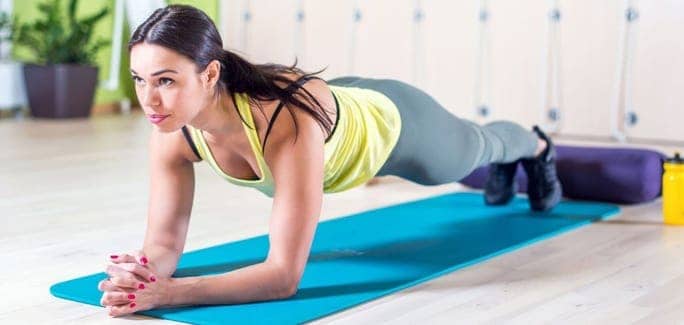Back pain, especially in the middle back, is becoming increasingly common as the whole world spends more and more time hovered over electronic devices and working online. Long hours of sitting coupled with poor postural habits adds up to bad spinal alignment, which in turn results in back pain and stiffness.
The following 5 stretches can provide immediate relief for middle back pain and stiffness. When practiced periodically throughout the day, they can promote better posture and improve overall spinal health and function.
- Chest stretch: When you spend long hours hunched forward each day, your chest muscles become tight and your back muscles become weakened, causing back pain. To stretch your chest, stand or sit erect at the edge of your chair, feet flat on the floor at hip width. Keeping your chin parallel to the floor and your gaze straight ahead, clasp your hands behind your back. Lift your chest and inhale, then exhale as you pull your arms back and away from your body, maintaining your forward gaze. Hold for 30 to 60 seconds, breathing naturally.
- Side bend: Most people slump into a sitting position, disengaging the muscles that hold your spine erect. The intercostal muscles between your ribs can become tight over time, causing you to slump forward with a rounded spine. Stand or sit erect at the edge of your chair. Gaze straight ahead and reach for the ceiling with your left hand, allowing your right arm to dangle at your side. Inhale. Exhale and gently bend to your right side, maintaining your forward gaze. Take your stretch to its longest length, then hold for 30 to 60 seconds, breathing naturally. Slowly reverse your movement, returning to your starting position. Repeat to the left.
- Trunk rotation: The tension of the muscles supporting the right and left sides of your spine can become imbalanced over time, with one side tighter than the other. A rotational stretch will help balance your muscles to relieve pain and stiffness. Sit erect at the edge of your chair, chest lifted, gaze forward. Place your left hand on the outside of your right knee. Inhale, then exhale as you rotate your trunk to the right, pulling gently with your left hand. Gaze over your right shoulder, and hold your rotation for 30 to 60 seconds, breathing normally. Slowly return to your start position and repeat to the left.
- Middle back stretch: Stand or sit erect at the edge of your chair, feet flat on the floor at hip width. Reach both hands overhead and gaze upward as you intertwine your fingers. Rotate your palms toward the ceiling. Inhale. Exhale as you slowly lower your interlaced hands to chest height, rounding your spine and pulling your navel inward. Hold for 30 to 60 seconds, breathing naturally.
- Hip flexor stretch: Sitting for long periods of time stretches out your gluteal muscles while making the hip flexor muscles tighter. Over time, this imbalanced muscle tension can throw your entire spine out of alignment, causing pain. Stand erect with your left hand resting on a wall, chair or desk for support and balance. Grasp your right ankle with your right hand and lift your chest upward as you straighten your hip. Point your knee directly toward the floor, creating a straight line from your ribs to your knee. Hold for 30 to 60 seconds, breathing normally. Repeat on the left side.
As a bonus, perform a set of 10 squats for each stretch, contracting your gluteal muscles and straightening your hips at the top of your movement. Squats will tighten your gluteal muscles to reposition your pelvic and spinal alignment.
If you are suffering from ongoing back pain, the back pain specialists at NYDNRehab can help. We use cutting-edge technologies and advanced treatment methods to diagnose and treat back pain. Whether your back pain stems from an acute injury or everyday lifestyle habits, the back pain team at NYDNRehab is dedicated to getting at the source of your back pain and resolving it.
























































